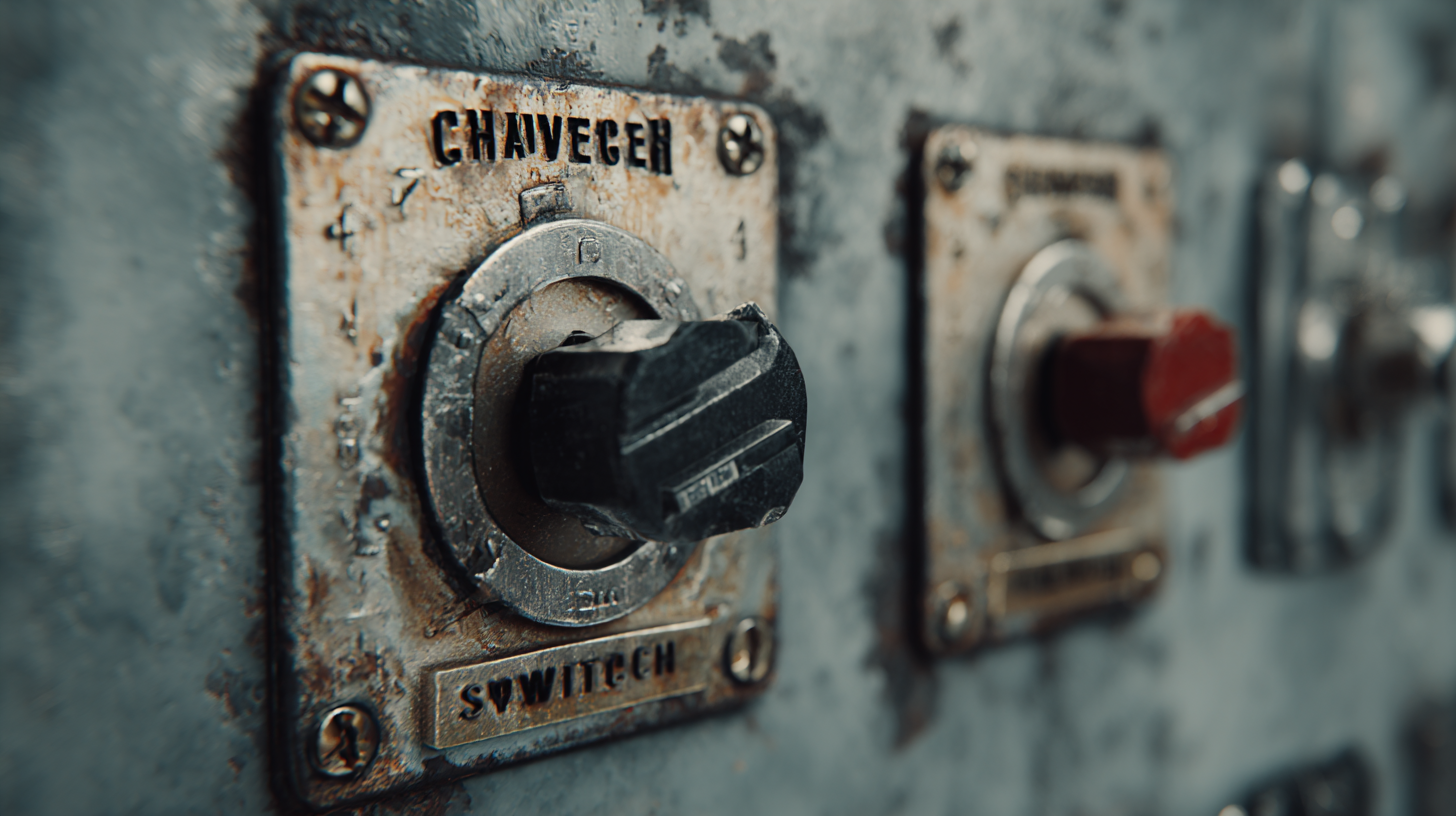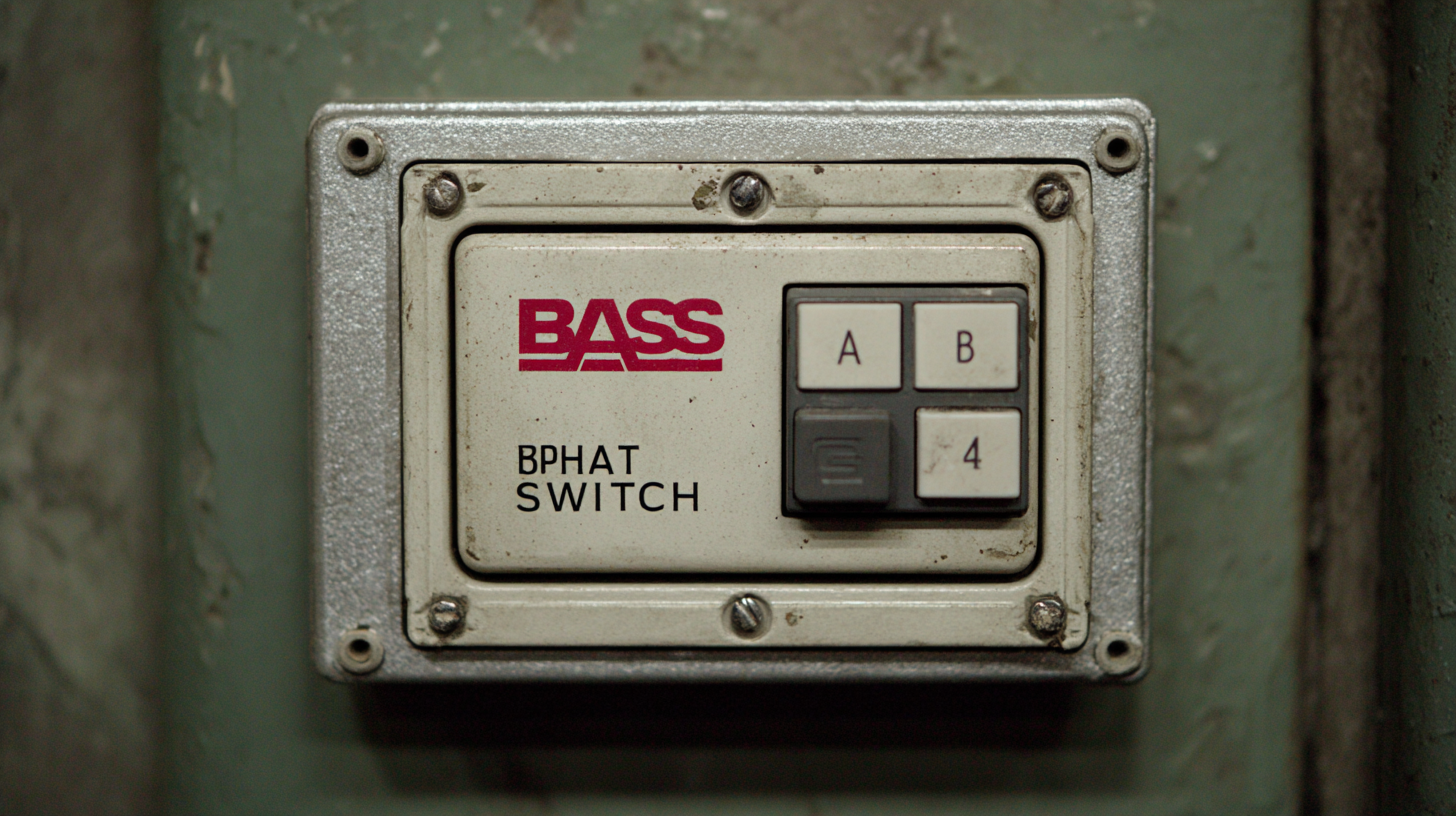
Challenges Associated with Selecting the Best Changeover Switch
In the ever-evolving landscape of industrial power management, the selection of an optimal Changeover Switch is critical for ensuring seamless operation and reliability. According to a report by Grand View Research, the global market for switchgear—including changeover switches—is expected to reach $150 billion by 2028, driven by increasing demand for efficient energy distribution and reliability in power systems.

However, the challenges in selecting the best Changeover Switch are multifaceted, encompassing considerations of after-sales service advantages, maintenance costs, and the technological specifications of various models. Industry experts emphasize that a well-informed choice can lead to significant long-term savings, as maintenance costs can account for up to 30% of a facility's operational expenses. As we delve into this topic, we’ll outline key tips to navigate the complexities of selecting the right Changeover Switch, ensuring optimal performance and cost-effectiveness for your operations.
Understanding the Importance of Changeover Switch Selection in Industrial Applications
In industrial applications, the selection of the appropriate changeover switch is crucial for ensuring operational efficiency and safety. Changeover switches play a pivotal role in managing power sources, enabling seamless transitions between different supply lines. When improperly selected, these switches can lead to significant downtime or even catastrophic failures, presenting a serious risk to both equipment and personnel. Understanding the operational demands and electrical specifications is essential to making an informed choice that aligns with both safety standards and performance requirements.
Moreover, the diverse range of changeover switches available can complicate the selection process even further. Factors such as load capacity, the type of current (AC or DC), and environmental conditions must all be meticulously evaluated. For instance, industrial settings often involve harsh conditions, such as extreme temperatures, moisture, or dust, which necessitate switches with appropriate chassis ratings and sealing methods. By prioritizing these factors, businesses can enhance reliability and reduce maintenance costs, ultimately leading to improved productivity and safety in their operations.
Key Factors to Consider When Choosing the Right Changeover Switch for Your Needs
Selecting the right changeover switch is essential for ensuring seamless transitions between power sources, especially in critical applications. When choosing a changeover switch, one of the most important factors to consider is the switch type and its configuration. Depending on the specific needs of your setup, you may require a manual or automatic switch, each offering unique advantages. Manual switches allow for direct control and operational flexibility, while automatic switches provide quick and effortless changeovers, minimizing downtime during power failures.
Another crucial aspect is the switch's current and voltage ratings. It's vital to ensure that the selected switch can handle the load without overheating or failing. Misjudging these ratings can lead to equipment damage or safety hazards. Additionally, consider the environmental conditions such as temperature and humidity where the switch will be installed. A switch designed for extreme conditions may be necessary for outdoor applications, ensuring durability and reliability in various climates. By carefully evaluating these factors, you can select a changeover switch that meets both your performance requirements and safety standards.
Challenges Associated with Selecting the Best Changeover Switch - Key Factors to Consider When Choosing the Right Changeover Switch for Your Needs
| Criteria | Description | Importance Level | Potential Challenges |
|---|---|---|---|
| Switch Type | Assessing the correct switch type (manual vs. automatic) | High | Misunderstanding operational requirements |
| Voltage Rating | Ensuring the switch can handle the required voltage | Critical | Using a switch with insufficient voltage capacity |
| Current Rating | Determining the maximum current capacity needed | Very High | Risk of overheating or failure if underrated |
| Environment | Considering environmental conditions (temperature, humidity) | Moderate | Corrosion or malfunction in harsh environments |
| Safety Features | Checking for integrated safety mechanisms | High | Accidental operation hazards if safety is lacking |
| Size and Weight | Assessing spatial and weight limitations | Low | Installation difficulties in tight spaces |
| Cost | Evaluating budgetary constraints | Moderate | Compromised quality due to low-cost options |
The Role of Voltage Rating and Current Capacity in Changeover Switch Effectiveness
When selecting the best changeover switch, the voltage rating and current capacity play crucial roles in determining its effectiveness. The voltage rating refers to the maximum voltage that a switch can handle without failure, which is critical for ensuring safety and optimal operation. If a switch is subjected to voltages higher than its rating, it may lead to insulation breakdown, arcing, or even catastrophic failure. Thus, it's essential to match the switch's voltage rating with the system requirements to avoid any potential hazards.

In addition to voltage, current capacity is another key consideration. It represents the maximum current the switch can carry without overheating or suffering damage. A switch with an inadequate current capacity could lead to poor performance, increased wear, and even failure during high-demand situations. Therefore, engineers must carefully calculate the expected load and select a changeover switch that not only meets but exceeds the required current capacity for reliability. Together, these specifications ensure that the changeover switch operates efficiently, prolonging the lifespan of the system while maintaining safety and performance standards.
Evaluating Environmental Conditions: How Temperature and Humidity Affect Changeover Switch Choices
When selecting the best changeover switch, evaluating environmental conditions is crucial. Temperature plays a significant role in the performance and longevity of switch components. In high-temperature environments, the materials used in the switch can expand, potentially leading to malfunction or failure. Switches designed specifically for high-temperature applications often incorporate heat-resistant materials and better insulation to ensure reliable operation. Conversely, in low-temperature settings, components can contract, impacting the mechanical and electrical properties of the switch. Therefore, it is essential to choose a switch that can tolerate the specific temperature range of your application.

Humidity is another critical factor affecting changeover switch selection. High levels of humidity can lead to condensation, which poses risks such as corrosion, short circuits, and reduced operational reliability. For environments with significant moisture, selecting switches with IP ratings that indicate protection against dust and water ingress becomes essential. Moreover, the use of sealants and corrosion-resistant materials can further enhance a switch's performance in humid conditions. Ensuring that the chosen changeover switch meets the environmental demands of both temperature and humidity will ultimately contribute to smoother operations and decrease the likelihood of unexpected downtime.
Best Practices for Testing and Maintaining Changeover Switches to Ensure Reliability
When it comes to ensuring the reliability of changeover switches, regular testing and maintenance are crucial. According to a report by the International Electrotechnical Commission (IEC), improper maintenance can lead to failure rates as high as 15% in critical electrical systems. This highlights the necessity of adhering to a stringent testing schedule.
Implementing a routine that includes visual inspections, electrical tests, and functional checks can help identify potential issues before they lead to significant downtime.
Tip: Schedule monthly inspections to check for wear and tear, ensuring that all connections are secure and free from corrosion.
Furthermore, utilizing advanced diagnostic tools can enhance your maintenance efforts. Tools such as circuit analyzers can provide real-time data on switch performance, offering insights that manual checks might overlook. The National Fire Protection Association (NFPA) recommends employing predictive maintenance strategies, which can reduce equipment failure by up to 30%.
Tip: Invest in state-of-the-art diagnostic equipment to monitor switch performance trends over time, enabling proactive maintenance that reduces the risk of unexpected failures.
Such practices not only uphold the integrity of the switch but also contribute to the overall safety of electrical installations. Investing in these best practices ensures that changeover switches operate efficiently and reliably, reducing the likelihood of costly disruptions.
